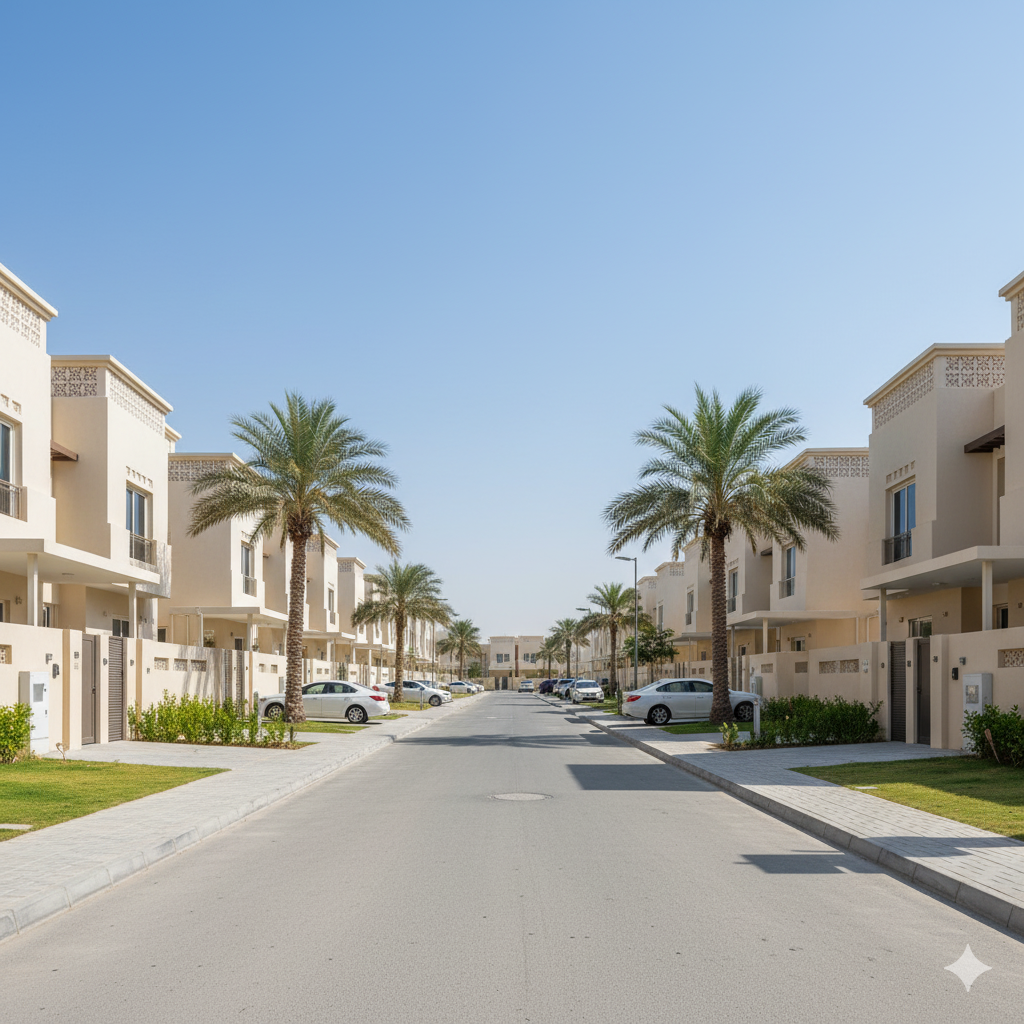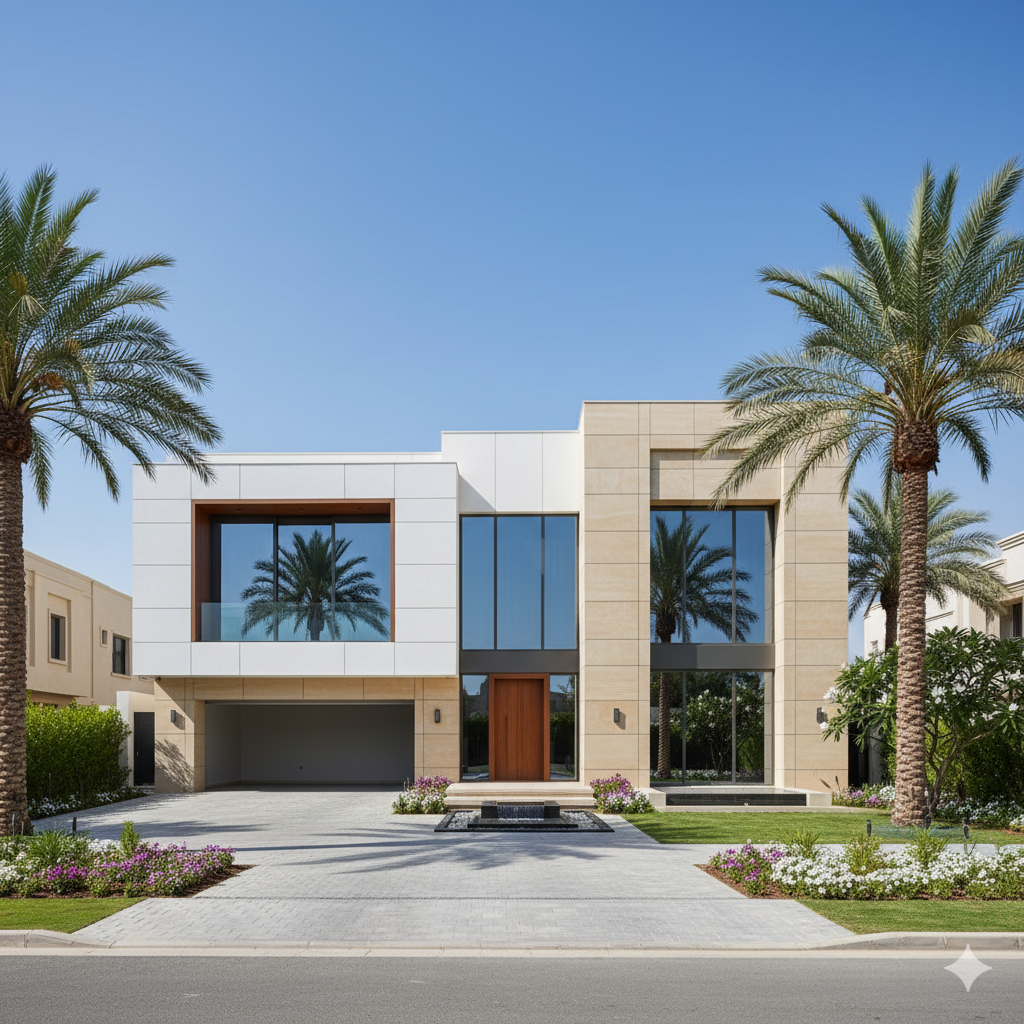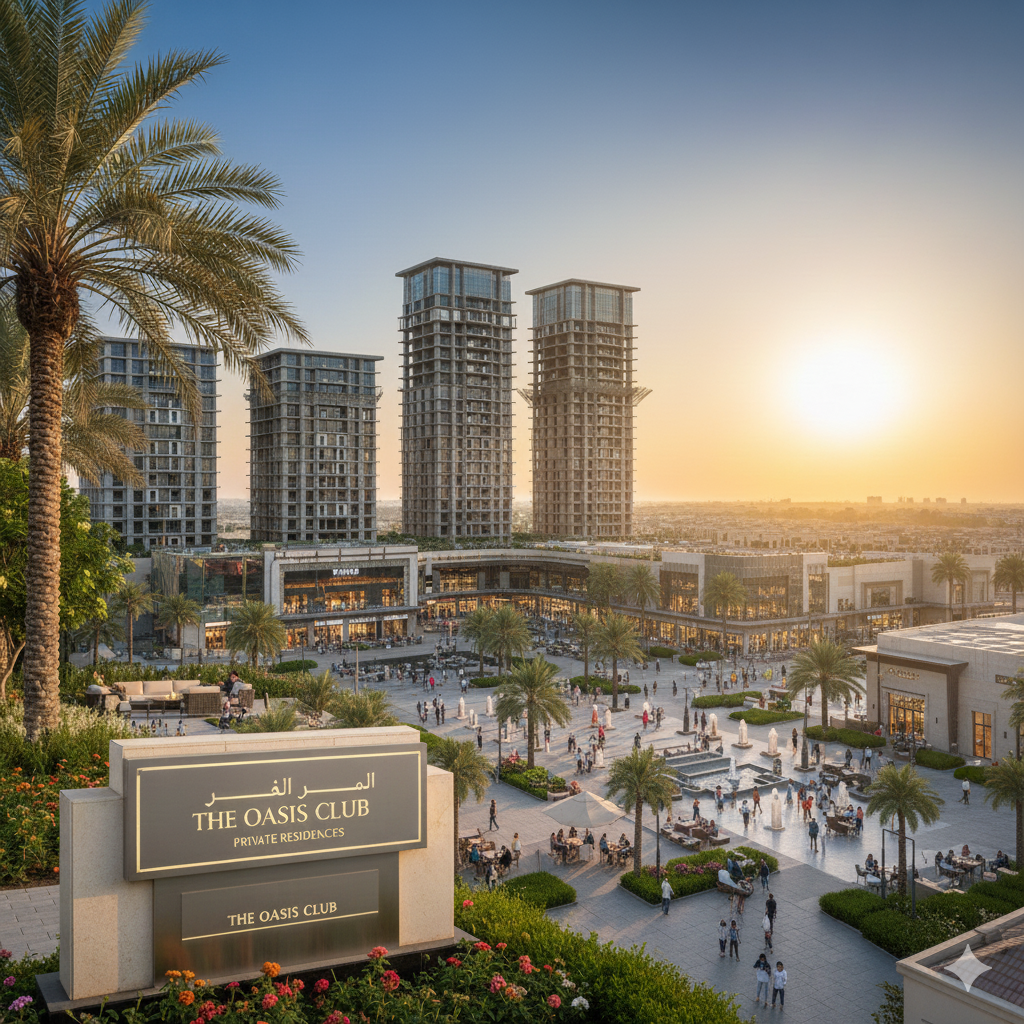Location stands as the single most critical factor determining property value, lifestyle satisfaction, and investment returns in Saudi Arabia’s real estate market. Unlike interior features that can be renovated or amenities that may be added, a property’s geographic position remains fixed, making initial location decisions irreversible. Understanding how to evaluate neighborhoods, assess infrastructure, and predict future development patterns empowers buyers to select properties that serve their needs while preserving and enhancing capital value over time.
The Fundamental Importance of Location
Real estate professionals worldwide emphasize that three factors matter most in property decisions: location, location, and location. This adage holds particular relevance in Saudi Arabia where rapid urban development, mega-project initiatives, and evolving infrastructure constantly reshape neighborhood dynamics and property values.
A well-chosen location delivers multiple benefits simultaneously—convenient access to employment, quality education for children, robust property appreciation, strong rental demand, and enhanced quality of life. Conversely, poor location choices create daily inconveniences, limit resale options, and potentially result in financial losses regardless of the property’s physical attributes.

Primary vs. Investment Property Location Criteria
Your location priorities differ significantly depending on whether you’re selecting a primary residence or investment property:
Primary Residence Location Factors
When choosing where you’ll actually live, emotional and practical considerations balance with financial logic:
Daily Convenience: Proximity to your workplace dramatically affects quality of life. Riyadh’s notorious traffic congestion can transform a 15-kilometer commute into 60+ minutes during peak hours. Properties within 20-30 minutes of your office during typical conditions preserve time and reduce stress.
Family Needs: Households with children prioritize access to quality schools, pediatric healthcare, safe playgrounds, and family-friendly recreation. Parents often accept premium pricing for properties in school catchment areas serving their educational preferences.
Lifestyle Alignment: Your personal preferences regarding urban density, cultural amenities, outdoor access, and community character should guide residential location choices. Extroverts might thrive in bustling city centers while others prefer quieter suburban environments.
Social Networks: Proximity to family, friends, and religious institutions matters for many Saudi families. Being near your support network and community connections enhances daily life satisfaction beyond what pure convenience provides.
Investment Property Location Priorities
When purchasing for rental income or capital appreciation, objective financial metrics take precedence:
Rental Demand Drivers: Properties near employment centers, universities, hospitals, or major attractions generate consistent tenant interest. Analyze which demographics will rent in specific areas and whether supply-demand balances favor landlords.
Appreciation Potential: Infrastructure improvements, new developments, and neighborhood gentrification patterns indicate where property values will likely increase most substantially. Forward-looking analysis identifies tomorrow’s prime locations at today’s prices.
Tenant Profile Stability: Areas attracting stable, long-term tenants reduce vacancy periods and turnover costs. Neighborhoods with high resident turnover may offer strong yields but increase management intensity.
Liquidity Considerations: Properties in established, well-known neighborhoods sell faster when you need to exit investments. Unique or remote locations may offer value but reduce buyer pools when selling becomes necessary.
Evaluating Infrastructure and Connectivity
Physical infrastructure fundamentally shapes location quality and future prospects:
Transportation Networks
Road connectivity determines daily convenience in car-dependent Saudi cities. Assess:
Highway Access: Properties near major highways facilitate longer-distance travel but may suffer from traffic noise. Ideal locations balance accessibility with residential tranquility—close enough for convenience but buffered from direct highway exposure.
Traffic Flow Patterns: Visit neighborhoods during peak commute hours to experience actual conditions rather than relying on map distances. A property appearing close to employment zones may require lengthy commutes during rush periods if roads lack capacity.

Public Transportation: Riyadh’s metro system will transform location dynamics once fully operational. Properties near metro stations will gain accessibility advantages, potentially commanding rental and value premiums. Jeddah and other cities are planning public transit that will similarly affect neighborhood desirability.
Airport Proximity: For frequent travelers or international workers, reasonable access to airports adds convenience. However, flight paths and airport noise affect properties too close to aviation facilities.
Utilities and Services
Basic infrastructure quality varies across Saudi neighborhoods:
Electrical Reliability: Most established areas enjoy reliable power, but newer developments or peripheral zones may experience occasional outages. Reliable electricity proves essential given Saudi Arabia’s climate dependence on air conditioning.
Water and Sewerage: Verify that properties connect to municipal water and sewerage systems rather than relying solely on delivered water and septic systems. Connection quality affects daily convenience and property values.
Internet and Telecommunications: High-speed internet access has become essential for remote work, education, and entertainment. Confirm fiber optic availability or reliable connectivity speeds before committing to locations.
Waste Management: Regular municipal waste collection services indicate established neighborhood infrastructure and ongoing municipal attention.
Analyzing Neighborhood Characteristics
Beyond physical infrastructure, neighborhood character significantly impacts living experience:
Safety and Security
Personal security concerns influence location decisions, particularly for families and expatriates:
Crime Statistics: While Saudi Arabia maintains relatively low crime rates compared to many countries, variations exist between neighborhoods. Research local crime patterns through municipality data, police reports, or community inquiries.
Lighting and Visibility: Well-lit streets, active evening foot traffic, and visible security presence enhance safety perceptions and actual security. Dark, isolated areas increase risks and reduce property appeal.
Compound vs. Open Neighborhoods: Gated compounds offer enhanced security through controlled access and dedicated security personnel. Open neighborhoods provide more authentic integration into Saudi communities but may lack security infrastructure that compounds provide.
Community Composition
Neighborhood demographics affect social experience and property demand:
Saudi vs. Expatriate Concentration: Some areas attract predominantly Saudi residents while others house large expatriate populations. Your comfort with community composition should influence choices—expatriates often prefer international neighborhoods while Saudis may seek culturally traditional environments.
Family Orientation: Neighborhoods dominated by families with children create different atmospheres than areas popular with young professionals or retirees. Align community demographics with your lifestyle stage and preferences.
Socioeconomic Profile: Areas with residents in similar economic circumstances typically feature appropriate retail, dining, and service options matching your expectations and budget.
Environmental Factors
Physical environment characteristics affect daily quality of life:
Green Spaces: Parks, landscaping, and natural features enhance aesthetic appeal and provide recreation opportunities. Saudi Arabia’s arid climate makes well-maintained green spaces particularly valuable.
Noise Levels: Traffic volume, proximity to commercial areas, nearby mosques, and industrial activities generate varying noise levels. Visit properties at different times—morning, evening, and weekend—to assess actual noise environments.
Air Quality: Industrial facilities, major highways, and sandstorm patterns affect air quality. Respiratory health concerns make air quality considerations especially important for families with children or elderly members.
Flood Risk: Flash floods occasionally affect Saudi cities during rare heavy rainfall events. Investigate whether areas experience flooding and whether properties sit in natural drainage paths or low-lying areas.
Proximity to Essential Amenities
Convenient access to daily necessities significantly impacts livability:
Education Facilities
For families with children, school access often dominates location decisions:
School Quality and Type: Identify schools matching your educational preferences—public Saudi schools, international schools, private academies, or religious institutions. Quality varies dramatically, making research essential.
Distance Considerations: Younger children benefit from schools within walking distance or short drives. Teenagers may manage longer commutes but extended daily travel time affects family schedules and student wellbeing.
Availability and Enrollment: Popular schools maintain waiting lists, and proximity doesn’t guarantee admission. Confirm enrollment possibilities before purchasing properties specifically for school access.
Future Education Needs: Consider where children will attend school as they advance through educational stages. Properties serving multiple education levels throughout childhood offer better long-term value.
Healthcare Access
Medical facility proximity provides peace of mind and practical convenience:
Hospital Distance: Major medical emergencies require rapid hospital access. Properties within 10-15 minutes of quality hospitals offer significant advantages, particularly for families with young children or elderly members.
Specialty Clinics: Ongoing medical conditions may require regular specialist visits. Proximity to cardiac centers, dialysis facilities, or other specialized services proves valuable for affected families.
Pharmacy Availability: Convenient pharmacy access for prescription medications and medical supplies affects daily convenience, especially during illness.
Shopping and Services
Daily errands and shopping convenience significantly impact lifestyle satisfaction:
Grocery Stores: Frequent grocery shopping makes nearby supermarkets valuable. Assess variety, quality, and price levels of accessible stores to ensure they meet your standards.
Retail Variety: Access to clothing, electronics, home goods, and specialty retailers reduces time spent traveling for shopping needs. Major commercial districts or quality malls within reasonable distance enhance convenience.
Personal Services: Barbershops, salons, dry cleaners, automotive services, and similar businesses should be readily accessible. Dense service availability indicates established neighborhoods with stable populations.
Banking and Financial Services: Branch locations for your banks facilitate cash deposits, document processing, and in-person financial services when needed.
Recreation and Entertainment
Leisure activities contribute to life satisfaction and community appeal:
Parks and Outdoor Facilities: Access to quality parks, walking trails, sports facilities, and outdoor recreation spaces promotes active lifestyles and provides family activity options.
Cultural Attractions: Museums, theaters, art galleries, and heritage sites enrich cultural life. Properties near cultural amenities appeal to education-focused families and culturally engaged individuals.
Dining and Social Venues: Restaurant variety, cafes, and social gathering places affect entertainment options and social life. Emerging food scenes often indicate neighborhood vitalization.
Sports and Fitness: Gyms, sports clubs, swimming pools, and athletic facilities support health and fitness goals. Some neighborhoods feature extensive sports infrastructure while others offer limited options.
Future Development Assessment
Anticipating neighborhood evolution helps identify appreciation potential and avoid deterioration risks:
Planned Infrastructure Projects
Government infrastructure plans signal future neighborhood transformation:
Metro and Transit Expansion: Properties along planned metro routes or near future stations will likely appreciate as improved accessibility enhances desirability. Research official plans for routes, station locations, and construction timelines.
Highway Improvements: New highway connections or expansions alter accessibility patterns. Areas gaining better highway access become more attractive while properties displaced by road construction may lose value.
Government Facilities: New schools, hospitals, community centers, or administrative buildings improve neighborhood amenities and signal government commitment to area development.
Private Sector Development
Commercial and residential development patterns indicate market confidence and future character:
New Residential Projects: Large-scale housing developments increase property supply, potentially pressuring prices in nearby existing properties. However, quality new projects may elevate overall neighborhood standards and attract residents.
Commercial Development: New shopping centers, office buildings, or entertainment venues enhance neighborhood offerings but may increase traffic and alter community character. Assess whether developments align with your preferences.
Hotel and Hospitality Projects: Hotel developments indicate tourism or business travel expectations, potentially bringing economic activity but also transient populations and traffic increases.
Mega-Project Proximity
Saudi Arabia’s transformational projects affect surrounding regions:
NEOM, Qiddiya, Red Sea Project: Properties within 50-100 kilometers of mega-projects may benefit from increased economic activity, employment opportunities, and infrastructure investments as projects mature.
Timeline Considerations: Mega-projects develop over decades, requiring patient capital and long investment horizons. Immediate appreciation shouldn’t be expected, but long-term prospects may prove substantial.
Risk Factors: Project delays, scope changes, or executional challenges could affect surrounding property values. Maintain realistic expectations and diversify investments rather than concentrating heavily in speculative mega-project areas.
Neighborhood Lifecycle Understanding
Neighborhoods evolve through predictable stages affecting property values and livability:
Emerging Neighborhoods
New developments or previously undeveloped areas:
Advantages: Lower entry prices, modern infrastructure, contemporary design standards, potential for significant appreciation as areas mature.
Disadvantages: Limited amenities initially, uncertain community character, construction disruption, infrastructure completion uncertainties.
Suitable For: Value-focused buyers, risk-tolerant investors, those willing to accept limited immediate convenience for long-term appreciation potential.

Established Neighborhoods
Mature areas with developed infrastructure and stable character:
Advantages: Proven amenity access, predictable community dynamics, stable property values, immediate livability.
Disadvantages: Higher entry prices, aging infrastructure, limited appreciation potential, possible decline if maintenance is neglected.
Suitable For: Primary residence buyers prioritizing immediate convenience, conservative investors seeking stability, families needing established school and service access.
Revitalizing Neighborhoods
Older areas experiencing renewal and gentrification:
Advantages: Moderate entry prices with appreciation potential, improving amenities, character and history, increasing trendiness.
Disadvantages: Transition uncertainty, construction disruption, possible gentrification displacement affecting community character.
Suitable For: Opportunistic investors identifying early gentrification signals, buyers appreciating authentic urban character, those comfortable with neighborhood transition dynamics.
Declining Neighborhoods
Areas experiencing deterioration or outmigration:
Advantages: Very low entry prices, potential for long-term turnaround if revitalization occurs.
Disadvantages: Safety concerns, declining amenities, falling property values, difficulty reselling, quality of life challenges.
Suitable For: Generally avoided unless deep value investing expertise and very long horizons justify extreme risk-taking.
Cultural and Religious Considerations
Saudi Arabia’s cultural context creates unique location factors:
Mosque Proximity
Mosques significantly affect neighborhood experience:
Prayer Call Volume: Properties very close to mosques experience prayer calls (adhan) five times daily. This provides spiritual convenience for observant Muslims but may disturb those unaccustomed to these sounds.
Friday Prayer Traffic: Friday midday prayers create temporary traffic congestion and parking challenges near mosques. Consider whether this weekly pattern affects your schedule.
Community Hub Function: Mosques serve as community centers beyond religious functions, creating social networks and neighborhood identity. Proximity facilitates community integration for those desiring strong local connections.
Gender Segregation Considerations
While Saudi society evolves, certain cultural norms persist:
Family Sections: Restaurants, entertainment venues, and recreational facilities often maintain family sections separate from singles sections. Neighborhoods with family-friendly establishments suit those preferring these accommodations.
Exercise and Recreation: Women’s exercise facilities, ladies-only gyms, and family swimming sessions vary by neighborhood. Women prioritizing fitness access should assess available options.
Social Norm Variations
Different neighborhoods reflect varying degrees of social conservatism or liberalism:
Compound Culture: International compounds often permit greater social freedom and mixed-gender socializing compared to traditional Saudi neighborhoods. Expatriates frequently prefer compounds matching their social comfort levels.
Traditional vs. Modern Areas: Some neighborhoods maintain very traditional character while others embrace more contemporary social norms. Select areas aligning with your lifestyle preferences and comfort levels.
Practical Location Assessment Methods
Systematic evaluation processes prevent overlooked factors and emotional decisions:
Multiple Visit Strategy
Visit prospective neighborhoods repeatedly under different conditions:
Time Variations: Observe areas during morning commutes, midday, evening hours, and weekends to understand traffic patterns, noise levels, and community activity across different periods.
Day of Week: Weekend atmospheres differ substantially from weekday dynamics. Friday midday brings prayer-related activity, while Thursday evenings (weekend start) show entertainment and social patterns.
Seasonal Factors: Saudi summers bring different challenges than pleasant winter months. Assess how extreme heat affects neighborhood usability and whether adequate shade, indoor alternatives, or cooling infrastructure exists.
Resident Conversations
Current residents provide invaluable insider perspectives:
Casual Inquiries: Strike conversations with people in parks, at shops, or walking in neighborhoods. Ask about satisfaction levels, challenges, community character, and advice for newcomers.
Online Communities: Facebook groups, expatriate forums, and neighborhood social media provide resident opinions and discussion of local issues. These forums reveal concerns and advantages that marketing materials omit.
Guard and Service Worker Insights: Security guards, maintenance workers, and service providers observe neighborhoods constantly and often provide candid assessments when asked respectfully.
Professional Consultation
Expert guidance supplements personal research:
Real Estate Agents: Experienced agents understand micro-level neighborhood dynamics, upcoming developments, and value trends that outsiders miss. Leverage their knowledge while maintaining independent judgment.
Urban Planners: For significant investments, consulting urban planning professionals can provide sophisticated analysis of growth patterns, infrastructure plans, and development trajectories.
Relocation Specialists: Companies specializing in helping expatriates relocate to Saudi Arabia offer neighborhood assessments, cultural guidance, and practical advice tailored to international residents.
Location Red Flags to Recognize
Certain warning signs indicate problematic locations:
Infrastructure Deficiencies
Incomplete basic infrastructure suggests developing areas where promised amenities may not materialize quickly or at all. Unpaved roads, absent streetlights, or missing utilities indicate premature development.
Environmental Hazards
Properties near industrial facilities, waste treatment plants, power substations, or similar infrastructure may experience pollution, odors, or health concerns affecting quality of life and property values.
Legal Complications
Some areas face zoning disputes, ownership uncertainties, or regulatory challenges. Verify clear legal status before purchasing in areas with complicated administrative situations.
Isolation Concerns
Properties far from amenities, employment, or population centers may offer low prices but create daily inconveniences and limit resale appeal. Extreme isolation reduces property liquidity substantially.
Negative Reputation
Neighborhoods with poor reputations—whether fair or not—suffer reduced demand and values. Research why negative perceptions exist and whether they reflect reality or outdated stereotypes.
Making Your Final Location Decision
After comprehensive research, synthesize findings into clear decisions:
Priority Ranking
List your absolute requirements, strong preferences, and nice-to-have features. Recognize that perfect locations rarely exist—trade-offs prove necessary. Clarify which factors warrant compromise and which remain non-negotiable.
Comparison Matrix
Create structured comparisons across candidate neighborhoods, scoring each against your priorities. Quantitative frameworks reduce emotional decision-making and reveal objective advantages.
Long-Term Perspective
Consider how neighborhoods will serve your needs over your anticipated ownership period. Life stage changes, family evolution, and career progression affect location suitability. Properties serving you well for 5-10 years provide better value than those requiring quick relocation.
Contingency Planning
Recognize that circumstances change unexpectedly. Select locations offering flexibility—strong rental demand provides options if employment relocates, while good resale markets facilitate selling if needed.
Conclusion
Choosing the right property location in Saudi Arabia requires balancing immediate needs with future prospects, personal preferences with investment logic, and objective analysis with intuitive comfort. The Kingdom’s rapid development creates both opportunities and uncertainties, making thorough location research more critical than in stable, mature markets.
Successful location selection considers transportation connectivity, amenity access, neighborhood character, infrastructure quality, and future development patterns while accounting for cultural factors unique to Saudi Arabia. Systematic assessment methods—multiple visits, resident conversations, professional consultations—reveal insights that casual observation misses.
Remember that location decisions are permanent while property features can be modified. Invest time in location research proportional to the investment’s significance. Properties in well-chosen locations provide daily satisfaction, preserve capital, and appreciate over time, while poor locations create persistent challenges regardless of the property’s physical attributes. Your location decision shapes not just where you live or invest, but the quality of life, financial returns, and satisfaction you derive from your property for years to come.


